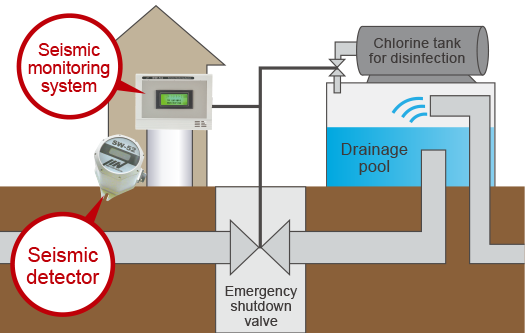
Image Source: Google
Seismic monitoring systems play a crucial role in protecting communities from the threat of earthquakes. These sophisticated systems leverage data collection and analysis to provide early warnings, assess risks, and help emergency responders take timely actions to ensure public safety. This article explores the technology behind seismic monitoring systems and how they contribute to safeguarding communities.
The Role of Seismic Monitoring Systems
1. Early Warning Systems
- Seismic monitoring systems services use networks of sensors to detect ground motion and seismic waves.
- These sensors can provide early warnings seconds to minutes before the strongest shaking reaches a location.
- Early warnings give people and automated systems time to take protective actions, such as shutting down critical infrastructure.
2. Risk Assessment
- By continuously monitoring seismic activity, these systems can assess the likelihood of an earthquake occurring in a specific region.
- Seismic monitoring data can help scientists and engineers evaluate the potential impact of an earthquake on infrastructure and public safety.
- Risk assessments enable authorities to implement mitigation strategies and improve building codes to enhance seismic resilience.
How Seismic Monitoring Systems Work
1. Sensor Networks
- Seismic monitoring systems consist of a network of seismometers and accelerometers strategically placed to detect ground motion.
- These sensors record the amplitude, frequency, and duration of seismic waves generated by earthquakes.
- Data from the sensors are transmitted to a central processing unit for analysis and interpretation.
2. Data Analysis
- Advanced algorithms analyze the seismic data to determine the location, magnitude, and depth of an earthquake.
- Machine learning and artificial intelligence help improve the accuracy and speed of seismic event detection.
- Real-time data processing allows for rapid decision-making and alert notifications to authorities and the public.
Benefits of Seismic Monitoring Systems
1. Public Safety
- Seismic monitoring systems provide crucial information for emergency preparedness and response efforts.
- Early warnings can save lives by giving people time to seek shelter and evacuate dangerous areas.
- Timely information allows emergency responders to prioritize their actions and allocate resources effectively.
2. Infrastructure Protection
- By assessing seismic risks, these systems help identify vulnerabilities in buildings, bridges, and other structures.
- Seismic monitoring data guide engineers in designing resilient infrastructure that can withstand earthquake forces.
- Investing in seismic monitoring systems can ultimately reduce the economic impact of earthquakes on communities.
Challenges and Future Developments
1. Data Interpretation
- Interpreting seismic data accurately can be complex due to the variability of ground conditions and the occurrence of aftershocks.
- Ongoing research focuses on improving algorithms and models to enhance the reliability of seismic monitoring systems.
- Collaboration between scientists, engineers, and policymakers is essential to address challenges in data interpretation.
2. Integration with Early Warning Systems
- Efforts are underway to integrate seismic monitoring systems with early warning systems to provide comprehensive alerts for earthquakes.
- Integration with other technologies, such as GPS and satellite imaging, can enhance the accuracy and effectiveness of early warnings.
- Developing interoperable systems that can communicate seamlessly across regions is a key focus for future developments.
Conclusion
Seismic monitoring systems are vital tools for protecting communities from the impact of earthquakes. By leveraging data and technology, these systems enable early warnings, risk assessments, and proactive measures to enhance public safety and infrastructure resilience. Continued advancements in seismic monitoring will play a crucial role in mitigating the risks associated with seismic events and safeguarding the well-being of communities worldwide.

